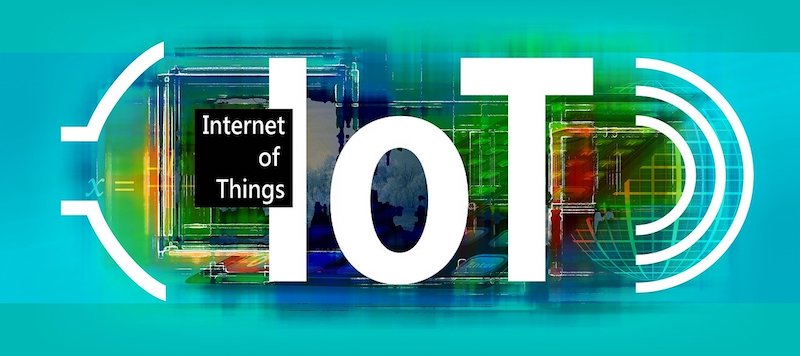Table of Content
Table of Content
The Internet of Things (IoT) is the next big thing.
It’s changing the way we live, work, and play. And it’s just getting started.
Imagine a world where everything is connected and can communicate with each other. Where your car can talk to your house, your refrigerator can order groceries for you, and your doctor can monitor your health remotely.
That’s the world of the IoT. And it’s coming sooner than you think.
According to Gartner, the number of IoT devices in use worldwide is expected to reach 25.2 billion by 2030. This growth is being driven by the adoption of IoT technologies in a wide range of industries, including manufacturing, healthcare, retail, and transportation.
To manage, monitor and control IoT devices efficiently at scale, you need an IoT device management platform.
What is an IoT Device Management Platform
An IoT device management platform is a software solution that helps businesses to manage their IoT devices.
These platforms provide a variety of features, such as device registration and provisioning, device monitoring and diagnostics, device tracking, device configuration and firmware updates, secure device communication, and data collection and analytics.
Example: AWS IoT, Azure IoT, SocketXP IoT Device Management Platform.
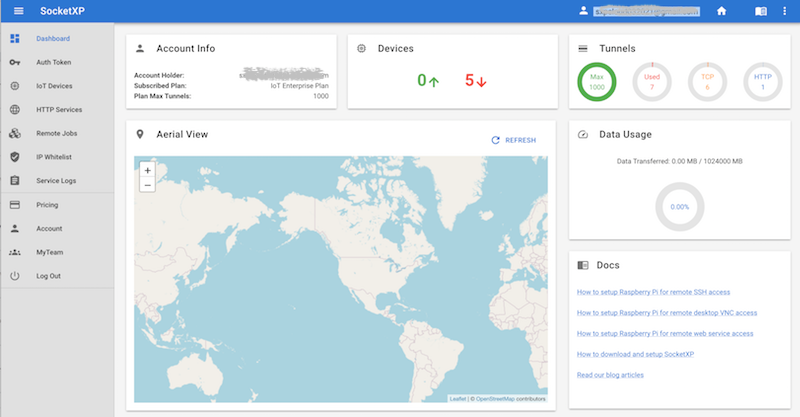
Why you need an IoT Device Management Platform
IoT device management platforms are essential for businesses that are deploying large numbers of IoT devices. These platforms can help businesses to:
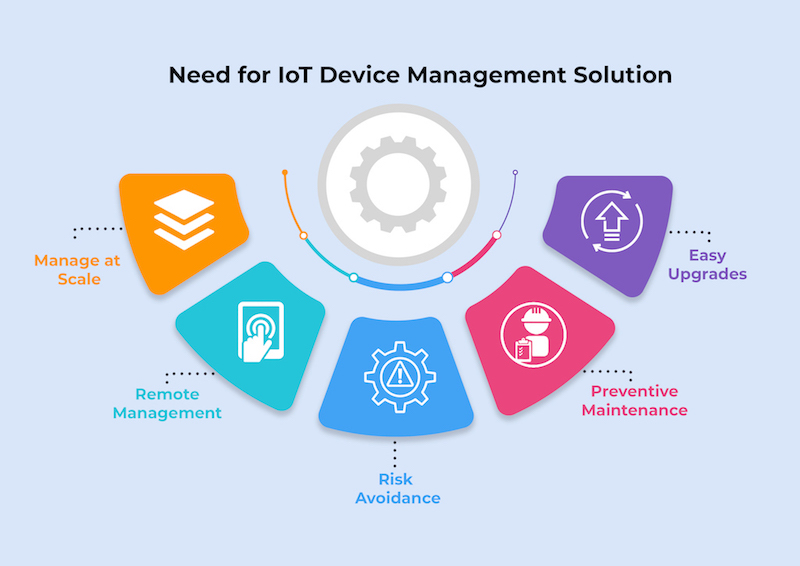
Improve efficiency: From chaos to control, IoT device management platforms can automate many of the tasks involved in managing IoT devices, such as device registration, provisioning, and configuration. This can free up IT staff to focus on other tasks.
Reduce costs: IoT device management platforms can help businesses to reduce the costs associated with managing IoT devices. For example, these platforms can help businesses to reduce the number of support tickets they receive and to identify and resolve problems with devices before they cause downtime.
Improve security: IoT device management platforms can help businesses to improve the security of their IoT devices. These platforms can help businesses to deploy security patches, to monitor devices for suspicious activity, and to isolate and quarantine compromised devices.
Simplify Maintenance: Maintaining the device in good health ensures its longevity and improves the bottom line for your business. Administrators of connected devices prefer to proactively identify imminent problems, say for example a device battery about to die or a disk usage about to reach its full capacity, and fix them before they occur.
Managing multiple IoT devices is akin to the IT support function managing computers across the branch offices of an enterprise from the headquarters. Unlike computer systems in an office setting, IoT devices are deployed in extreme working environments with varying temperatures, humidity, pressure, and network connectivity.
Handling the upkeep through these vagaries needs a comprehensive approach, at the heart of which must be an IoT device management solution.
Recommended for you: From Chaos to Control - How an IoT Device Management Platform Streamlines Operations
Key Features of IoT Device Management Platforms
Here is a more detailed look at some of the key features of IoT device management platforms:
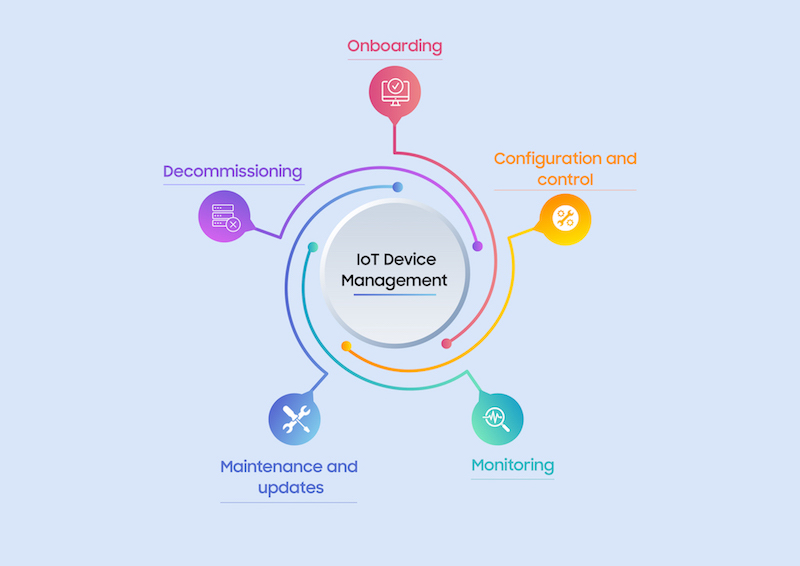
Device registration and provisioning:
This feature allows you to register your IoT devices with the platform and to provision them with the necessary credentials and configuration settings. This process can be done manually or automatically, depending on the platform.
For example, you could use an IoT device management platform to automatically register and provision all of the new devices that are connected to your network. This would save you a lot of time and effort, and it would also help to ensure that all of your devices are properly configured.
Device monitoring and diagnostics:
This feature allows you to remotely monitor the performance of your IoT devices and to identify and resolve any problems that may occur. This can be done by collecting data from the devices, such as CPU usage, memory usage, and network traffic.
For example, you could use an IoT device management platform to monitor the temperature of your smart thermostats. If a thermostat starts to overheat, the platform could send you an alert so that you can take action to prevent damage.
Device configuration and firmware updates:
This feature allows you to remotely configure your IoT devices and to deploy firmware updates. This can be useful for changing device settings, such as the network configuration or the operating mode. It can also be used to deploy security patches and new features.
For example, you could use an IoT device management platform to remotely update the firmware on all of your security cameras. This would ensure that your cameras are always running the latest security patches.
Secure device communication:
This feature helps to protect your IoT devices and data from cyberattacks. It can include features such as encryption, authentication, and authorization.
For example, an IoT device management platform might use encryption to protect the data that is transmitted between your devices and the cloud. This would help to prevent unauthorized users from accessing your data.
Data collection and analytics:
This feature allows you to collect data from your IoT devices and to analyze it to gain insights into your business. This data can be used to improve your products and services, to optimize your operations, and to make better decisions.
For example, you could use an IoT device management platform to collect data from your smart thermostats to learn more about how your customers are using them. This data could be used to develop new features or to create more targeted marketing campaigns.
IoT Device Remote Access
Providing secure remote access to IoT devices over the internet is one of the critical functions of an IoT device management platform. IoT device admins and support teams need remote access to IoT devices to configure, debug and manage them. There are multiple ways to remote access IoT devices.
IoT SSH Remote Access
IoT SSH remote access provision allows you to directly connect to IoT or embedded Linux devices that may even be behind a NAT router or a firewall and send commands from a web portal. The data is sent through an encrypted SSH tunnel.
Remote SSH sessions are extremly useful in executing commands or scripts remotely, restarting services, viewing device logs, updating device configuration, upgrade software or apply patches.
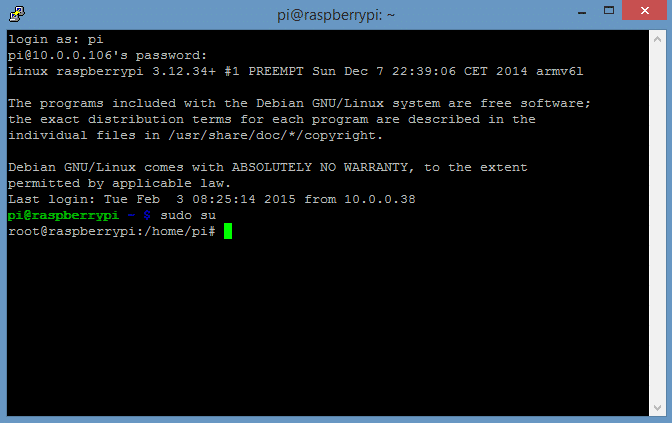
IoT Remote Desktop or VNC Remote Access
IoT RDP / VNC remote access allows you to connect to your IoT device or Raspberry Pi desktop remotely. RDP / VNC remote access comes in handy when you want to access and control a GUI based desktop application remotely.
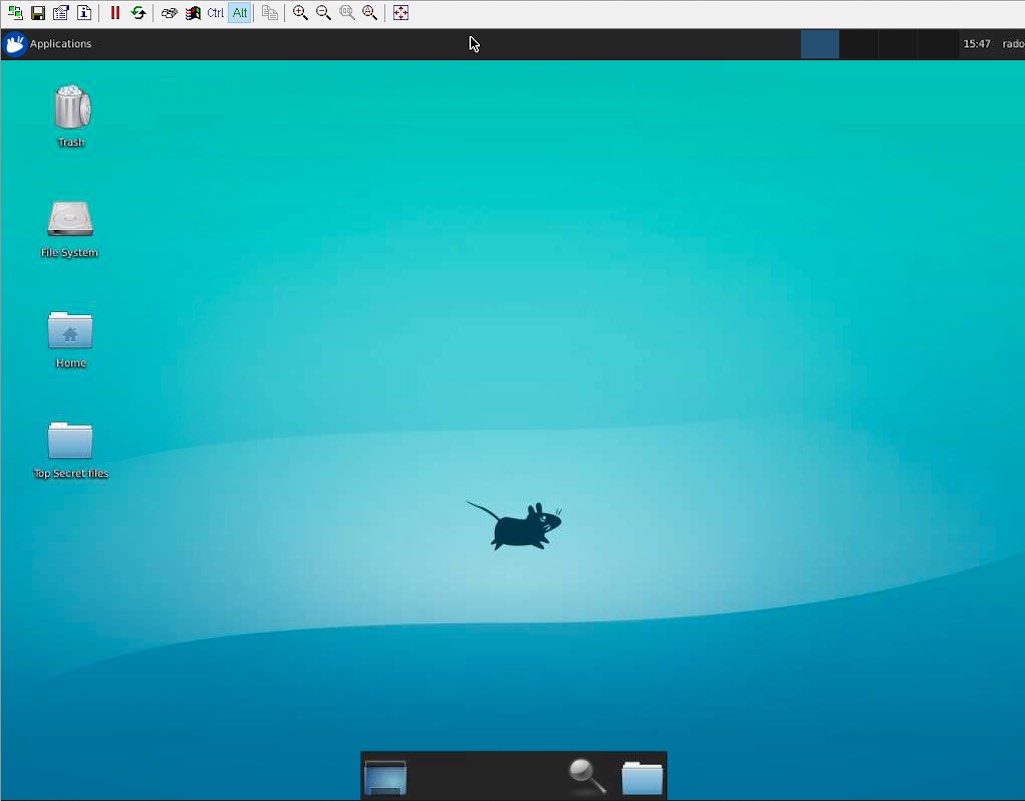
IoT Web Application Remote Access
IoT Web application remote access solutions create a unique HTTPS based secure public URL for the web services running in your IoT devices so that you can access them from the internet using any portable or mobile devices. You can use the web URL to send or receive webhook notifications from your IoT web application.
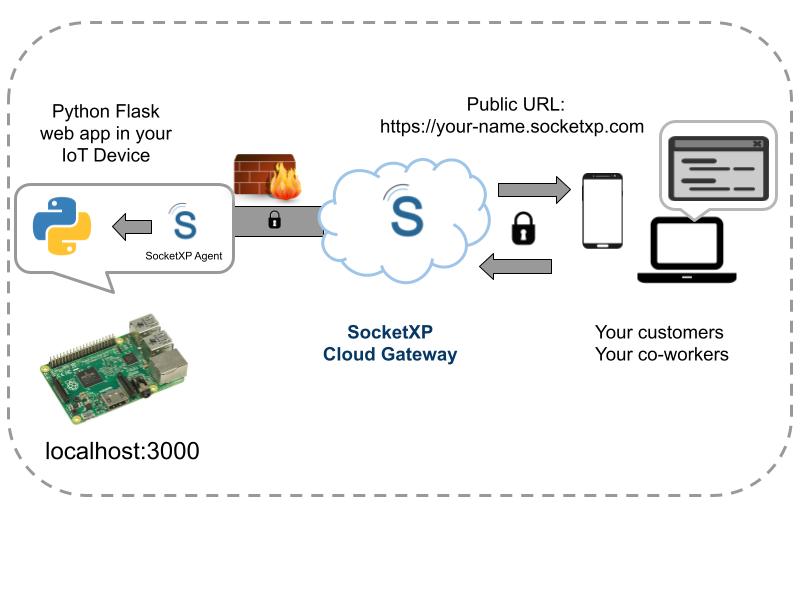
What are Some Usecases for IoT Device Management Platforms
Here are some specific examples of how IoT device management platforms can be used:
- A retail store can use an IoT device management platform to manage its inventory tracking system. The platform can be used to track the location and status of inventory in real time. This can help the store to avoid stockouts and to improve customer service.
- A manufacturing plant can use an IoT device management platform to monitor its production equipment. The platform can be used to identify and resolve problems with equipment before they cause downtime. This can help the plant to improve efficiency and reduce costs.
- A transportation company can use an IoT device management platform to track its fleet of vehicles. The platform can be used to track the location of vehicles in real time and to monitor their fuel consumption. This can help the company to optimize its routes and reduce costs.
- A city government can use an IoT device management platform to manage its smart city infrastructure. This could include things like traffic lights, streetlights, and parking meters. The platform can be used to monitor the performance of these devices, to identify and resolve problems, and to collect data to improve city operations.
- A hospital can use an IoT device management platform to manage its medical devices. This could include things like patient monitors, ventilators, and infusion pumps. The platform can be used to ensure that these devices are properly configured and maintained, to track the location of devices, and to collect data to improve patient care.
- A utility company can use an IoT device management platform to manage its smart grid infrastructure. This could include things like smart meters, grid-scale batteries, and renewable energy sources. The platform can be used to monitor the performance of these devices, to balance the grid, and to reduce costs.
How IoT Device Management Platforms will transform the future:
IoT device management platforms are becoming increasingly important for edge computing. Edge computing is a distributed computing paradigm that brings computation and data storage closer to the devices where data is generated. This is important for IoT applications because it can reduce latency, improve performance, and save bandwidth. IoT device management platforms can help businesses to manage edge devices and to deploy and manage edge applications.
IoT device management platforms are becoming more integrated with other IT systems. For example, IoT device management platforms are being integrated with enterprise resource planning (ERP) systems and customer relationship management (CRM) systems. This integration allows businesses to get more value from their IoT data and to automate more tasks.
IoT device management platforms are becoming more intelligent. Newer platforms use AI and ML to automate tasks, identify patterns in data, and make predictions. This intelligence can help businesses to improve the efficiency and effectiveness of their IoT operations.
IoT device management platforms are becoming more secure. As the threat landscape evolves, IoT device management platforms are becoming more sophisticated in their security capabilities. Newer platforms offer features such as anomaly detection, threat intelligence, and zero-trust security. This helps businesses to protect their IoT devices and data from cyberattacks.
How to choose an IoT device management platform
As businesses embark on their IoT journeys, a fundamental strategic decision emerges:
Should they build their own in-house IoT device management solution (DIY) or opt for a dedicated, commercial IoT device management platform?
This choice is not merely technical; it has profound implications for costs, scalability, security, time-to-market, and long-term operational success.
DIY IoT Device Management refers to the approach where an organization develops and maintains its own custom software, scripts, and infrastructure to handle device onboarding, monitoring, updates, and data collection. This often involves leveraging open-source components, cloud primitives, and significant in-house engineering effort.
In contrast, a Dedicated IoT Device Management Platform is a pre-built, often cloud-based (SaaS) or on-premise commercial solution that provides a comprehensive suite of functionalities for managing IoT devices throughout their lifecycle. These platforms are designed to offer robust, scalable, and secure capabilities out-of-the-box.
Recommended for you: DIY vs. Dedicated - When Do You Really Need an IoT Device Management Platform?
Here are some of the most important things to look for when choosing an DIY vs Dedicated IoT device management platform:
- Scalability: The platform should be able to scale to meet the needs of your growing business. Security: The platform should provide robust security features to protect your devices and data from cyberattacks.
- Ease of use: The platform should be easy to use and manage, even for users with limited technical expertise.
- Features: The platform should offer the features you need to manage your devices effectively. Pricing: The platform should be affordable for your business.
It is also important to choose a platform that is scalable and secure. As your IoT deployment grows, you need a platform that can scale to meet your needs. You also need a platform that can protect your IoT devices and data from security threats.
Here are some additional tips for choosing and using an IoT device management platform:
Consider your specific needs and requirements. Not all IoT device management platforms are created equal. Some platforms are designed for specific industries or applications. Others are designed for businesses of a certain size. It is important to choose a platform that meets your specific needs and requirements. Evaluate multiple platforms. Before you choose an IoT device management platform, I recommend evaluating multiple platforms. This will help you to compare features and pricing options. You can also read reviews from other users to get their feedback on different platforms.
Start small. If you are new to IoT device management, I recommend starting small. Choose a platform that is designed for small businesses or that offers a free trial. This will allow you to test out the platform and make sure that it is the right fit for your needs before you commit to a long-term contract.
Get support from the vendor. The vendor of your IoT device management platform should offer good support. This is important because you may need help troubleshooting problems or configuring the platform.
Keep the platform up to date. It is important to keep your IoT device management platform up to date with the latest security patches and features. This will help to protect your devices and data from security threats.
By following these tips, you can choose and use an IoT device management platform that will help you to improve the efficiency and effectiveness of your business.
IoT Device Management Platform - Cloud Versus On-Premises
An on-premises IoT device management platform is a software solution that is installed and run on local computers or servers in a private network. This type of platform offers greater security and control, as well as potentially lower costs for some organizations.
A cloud IoT device management platform is a software solution that is hosted and managed by a third-party vendor. This type of platform is typically easier to set up and use, and it can be scaled more easily to meet the needs of growing businesses.
Recommended for you: Cloud vs. On-Premises IoT Device Management Platform - Which One You Should Choose?
SocketXP IoT Device Management Platform
SocketXP is an IoT device management platform that can be used to remotely manage IoT devices, Raspberry Pi or any embedded Linux devices at scale.
SocketXP platform is available in the cloud as a software service online.
SocketXP also provides licenses for self-hosting on-prem version of its IoT device management software.

SocketXP IoT Device Management Platform provides the following features to remotely manage hundreds of thousands of IoT, Raspberry Pi or embedded Linux edge devices, that are located behind a NAT router and firewall on your customer’s local network or connected to a Starlink, 4G, 5G mobile cellular network:
- Remote Device Management
- Remote Monitoring
- Remote Configuration
- Remote Debugging
- Remote Software Update
- Remote Device Tracking
- Remote Command Execution
- Remote File Transfer
- Remote Troubleshooting
SocketXP solution can be used to securely remote access or SSH into IoT or embedded edge Linux devices in your private network or private cloud.
SocketXP creates secure SSL/TLS encrypted reverse proxy tunnels to connect while communicating with your remote IoT devices.
SocketXP can also be used to create a unique HTTPS public web URL for each of the private web applications running in your remote IoT devices. Online services could communicate with your private web application using the public web URL.
SocketXP IoT Controller connects to a lightweight SocketXP agent, that needs to be installed in your IoT device, to manage, control and monitor the IoT device remotely.
Try SocketXP for free for 30-days without any commitments. No credit card required.
Conclusion
Overall, IoT device management platforms are an essential tool for businesses and organizations that are deploying large numbers of IoT devices.
These platforms offer a variety of benefits, including improved efficiency, reduced costs, and improved security.
These platforms provide a variety of features, such as device registration and provisioning, device monitoring and diagnostics, device tracking, device configuration and firmware updates, secure device communication, and data collection and analytics.
It is prudent to choose an IoT device management platform that meets your needs in the short-term and long-term.
As the IoT market continues to grow, we can expect to see IoT device management platforms become even more important and sophisticated.
